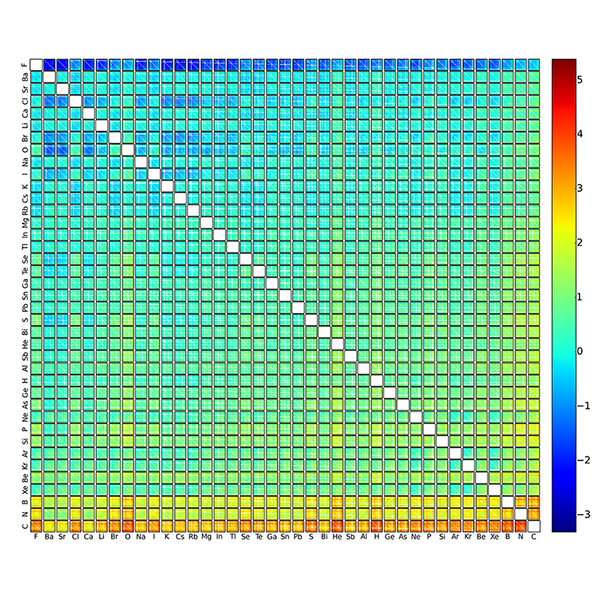Artificial intelligence helps in the discovery of new materials
Thanks to modern artificial intelligence, Felix Faber, a doctoral student in Prof. Anatole von Lilienfeld’s group, has succeeded in solving this material design problem. First, using quantum mechanics, he generated predictions for thousands of elpasolite crystals with randomly determined chemical compositions. He then used the results to train statistical machine learning models (ML models). The improved algorithmic strategy achieved a predictive accuracy equivalent to that of standard quantum mechanical approaches.

The matrix depicts the formation energy – an indicator of stability – of around two million possible compounds. Each pixel corresponds to one of the two million quaternary crystals. Depending on the combination of elements, they display either a high (red) or low (blue) energy value. One element is specified vertically and one horizontally; each box contains a suitable resolution for the two remaining elements. (© University of Basel, Department of Chemistry)
Reference
Felix Faber, Alexander Lindmaa, O. Anatole von Lilienfeld, and Rickard Armiento, Machine Learning Energies of 2M Elpasolite (ABC2D6) Crystals,
Physical Review Letters 117, 135502 (2016)
doi: 10.1103/PhysRevLett.117.135502
Low-volume newsletters, targeted to the scientific and industrial communities.
Subscribe to our newsletter